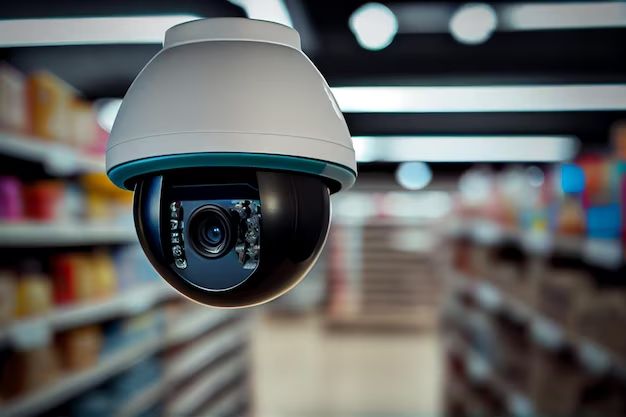Fake security cameras have become increasingly common as real cameras get less expensive. Criminals use fake cameras to deter crime on a budget, and some retailers use them in the hopes of manipulating thieves into avoiding their store over others with no visible security. But fake cameras don’t boost safety — they just create a false sense of security. Learn to spot the telltale signs of fake security cameras so you know which public spaces are monitored and which are not.
Page Contents
What are fake security cameras?
Fake security cameras, also known as dummy cameras, are surveillance cameras made to look real but don’t actually work. They are simply for show to make criminals think they are being recorded. Some models have flashing LED lights to appear more authentic. The housing might say “security camera” on it. But these cameras don’t capture any video footage at all.
Some types of fake security cameras include:
- Plastic dummy dome cameras
- Indoor fake cameras
- Outdoor dummy cameras with fake conduit cabling
- Vintage-looking dummy CCTV cameras
- Fake camera dome with no hole for a lens
- Real cameras filled with epoxy so the lens doesn’t work
Why do people use fake security cameras?
There are a few reasons people and businesses use phony surveillance cameras:
- To deter crime – Fake cameras are used to make people think they are being watched to discourage criminal activity.
- Intimidation – Visible (but fake) cameras create unease so people feel like they are under surveillance.
- For show – Retail stores often want to appear high tech and secure.
- Budget reasons – Dummy cameras are much cheaper than real high tech video surveillance.
- Laziness – Some landlords don’t want to install wired security cameras.
Why you shouldn’t use fake cameras
Fake security cameras seem like a quick solution, but they can create bigger issues when criminals realize your cameras are phony. Potential risks include:
- Creates false sense of security – People often let their guard down thinking the area is under surveillance.
- May increase crime once criminals know cameras are fake – Thieves then see the space as an easy target.
- Liability if crimes occur – Victims can go after property owners for negligence for appearing to provide security.
- Doesn’t help police investigations – Fake cameras don’t capture footage to help catch and prosecute criminals.
Security experts recommend investing in real cameras whenever possible for legitimate asset protection and crime deterrence. At the very least, have a few real cameras in key locations so criminals can’t tell which cameras are real versus fake.
How to spot fake security cameras
It’s not always easy to tell dummy cameras from real surveillance cameras. But there are a few ways to identify counterfeit units:
- No wires or cabling – Real cameras connect to a recorder with wires and cables. Fake cameras often don’t have any at all.
- No holes for a lens – Fake domes are missing a lens opening since they have no interior camera components.
- LEDs don’t blink – The LED lights on most real cameras alternate to show it’s recording. Fake camera LEDs stay solid.
- Low quality materials – Real cameras are made of sturdy plastics and metals. Fake cameras are often flimsy.
- Unrealistic placements – Real cameras need power and are placed intentionally. Fake cameras are sometimes oddly located.
- No camera manufacturer logo – Authentic cameras have brand names etched on them like Sony or Panasonic.
Examples of fake security cameras
To build your skills spotting counterfeit units, study these examples of some commonly used fake security cameras:
Plastic dome camera – No lens hole

Notice this fake dome camera is smooth plastic with no hole for a lens. It likely has no internal components.
Indoor mini dome camera – No wires

This small indoor dome camera has flashing LEDs to appear real but no wires connecting it to a recording device or power source.
Outdoor bullet camera – Cheap quality

Despite the professional look, this outdoor bullet camera has cheap plastic components and unrealistic conduit cabling, revealing it’s just for show.
Vintage CCTV camera – Unlikely placement

While clever, this vintage CCTV box camera is placed where no power source could reach, indicating it’s a dummy model for appearance only.
Conclusion
Fake security cameras don’t enhance safety – they put people and property at risk by providing a false sense of security. Take time to scrutinize the surveillance cameras used in public areas and on buildings you frequent to determine if they are real or fake. Spotting counterfeit cameras allows you to avoid places that only appear to have security measures in place. Investing in genuine CCTV cameras remains the best option for authentic monitoring and crime deterrence.
